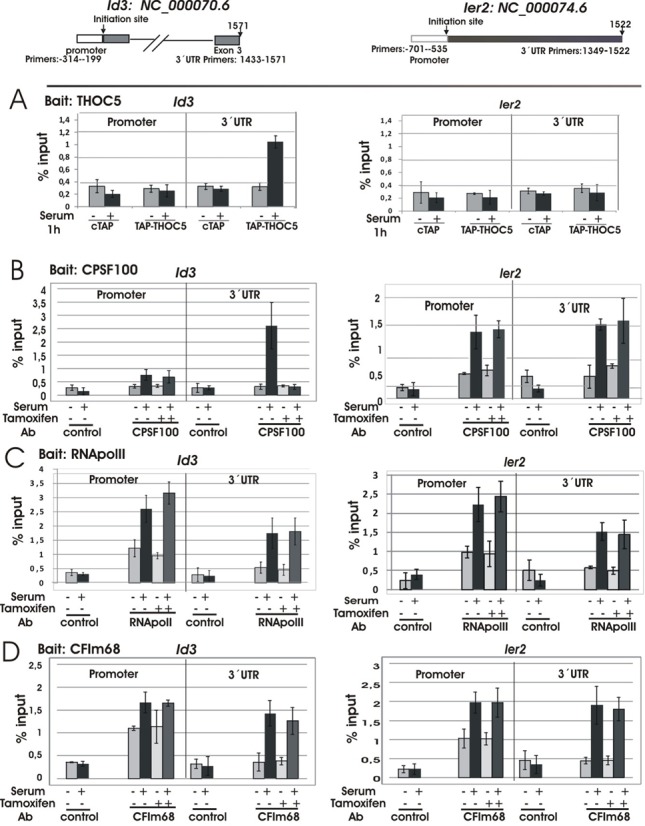Figure 6.

THOC5 is required for recruiting of the CPSF100 to 3′end of THOC5 target gene. pCTAP (cTAP) and pCTAP carrying THOC5 cDNA (TAP-THOC5) were transfected into mouse NIH3T3 cells (Bait: THOC5 (A)), or ERT2 THOC5 (flox/flox) MEF cells were treated with or without tamoxifen for 2 days (Baits: CPSF100 (B), RNApolymerase II (C), or CFIm68 (D)). The cells were then incubated for 24 h in the presence of 20% FCS. After serum starvation for 24 h, cells were stimulated with (+) or without (−) serum for 1 h. After cross-linking by adding formaldehyde, protein and DNA were extracted and the chromatin was sheared by sonication. Cell extracts and binding fractions with streptavidin Sepharose or immunoprecipitates using CPSF100, RNApolymerase II or CFIm68 antibodies or control IgG were analyzed by Id3 (promoter region (-314- -199)and 3′UTR in exon 3 (1433-1571)) and Ier2 (promoter region (-701- -535) and 3′UTR region (1349-1522))-specific PCR (Table 1; ChIP). The promoter region of each gene was described by Zhao etal. (24). Numbers represent nucleotide numbers from the initiation site for each gene. Data represent% input of each PCR reaction. Three independent experiments were performed.
